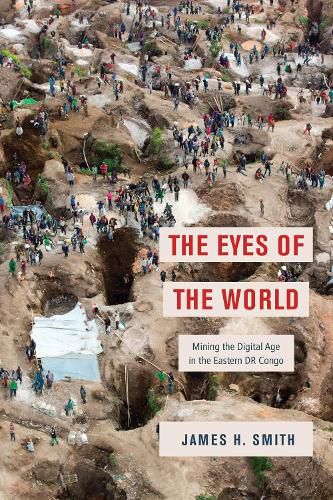Readings Newsletter
Become a Readings Member to make your shopping experience even easier.
Sign in or sign up for free!
You’re not far away from qualifying for FREE standard shipping within Australia
You’ve qualified for FREE standard shipping within Australia
The cart is loading…






The Eyes of the World focuses on the lives and experiences of Eastern Congolese people involved in extracting and transporting the minerals needed for digital devices.
The digital devices that define our era exist not only because of Silicon Valley innovations, but due to a burgeoning trade in dense, artisanally mined substances like tantalum, tin, and tungsten. As James H. Smith argues, in the Eastern DR Congo these minerals are also socially dense, fueling movement and collaborations that encompass diverse actors, geographies, temporalities, and dimensions.
Based on long-term research, The Eyes of the World examines how Eastern Congolese understand the work in which they are engaged, the forces pitted against them, and the total process through which substances in the earth and forest are converted into commodified resources. Smith shows how the experience of violent dispossession has fueled a bottom-up social theory that valorizes movement and collaboration-one that directly confronts tracking initiatives designed to ensure that the minerals in digital devices are conflict free by excluding certain actors and places. While global watch groups espouse Western-style bureaucratic methods that prioritize transparency and purity, Smith explains why Congolese understand these exclusionary interventions as potentially violent and predatory efforts to further separate them and their histories from supposedly clean technologies.
$9.00 standard shipping within Australia
FREE standard shipping within Australia for orders over $100.00
Express & International shipping calculated at checkout
The Eyes of the World focuses on the lives and experiences of Eastern Congolese people involved in extracting and transporting the minerals needed for digital devices.
The digital devices that define our era exist not only because of Silicon Valley innovations, but due to a burgeoning trade in dense, artisanally mined substances like tantalum, tin, and tungsten. As James H. Smith argues, in the Eastern DR Congo these minerals are also socially dense, fueling movement and collaborations that encompass diverse actors, geographies, temporalities, and dimensions.
Based on long-term research, The Eyes of the World examines how Eastern Congolese understand the work in which they are engaged, the forces pitted against them, and the total process through which substances in the earth and forest are converted into commodified resources. Smith shows how the experience of violent dispossession has fueled a bottom-up social theory that valorizes movement and collaboration-one that directly confronts tracking initiatives designed to ensure that the minerals in digital devices are conflict free by excluding certain actors and places. While global watch groups espouse Western-style bureaucratic methods that prioritize transparency and purity, Smith explains why Congolese understand these exclusionary interventions as potentially violent and predatory efforts to further separate them and their histories from supposedly clean technologies.